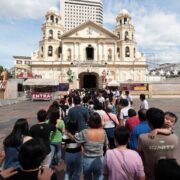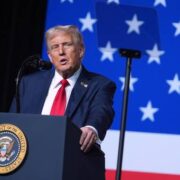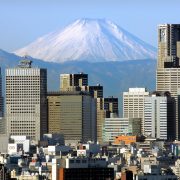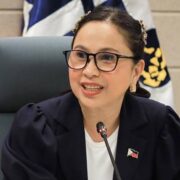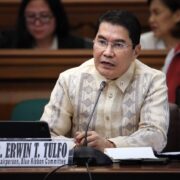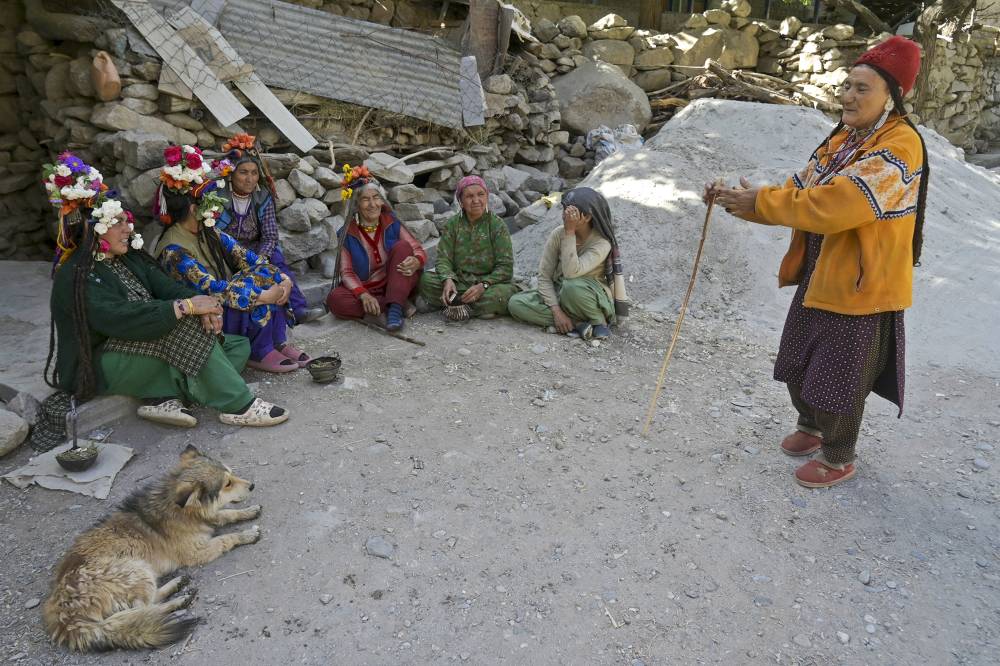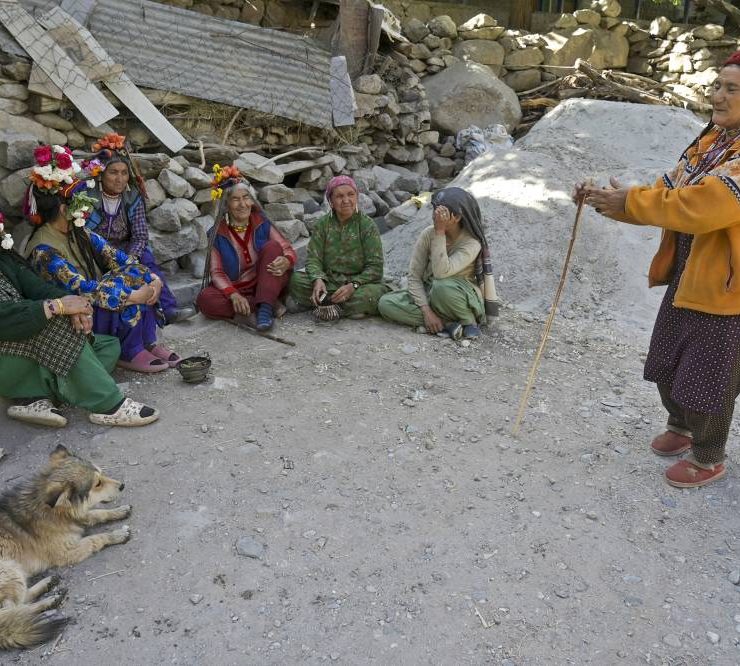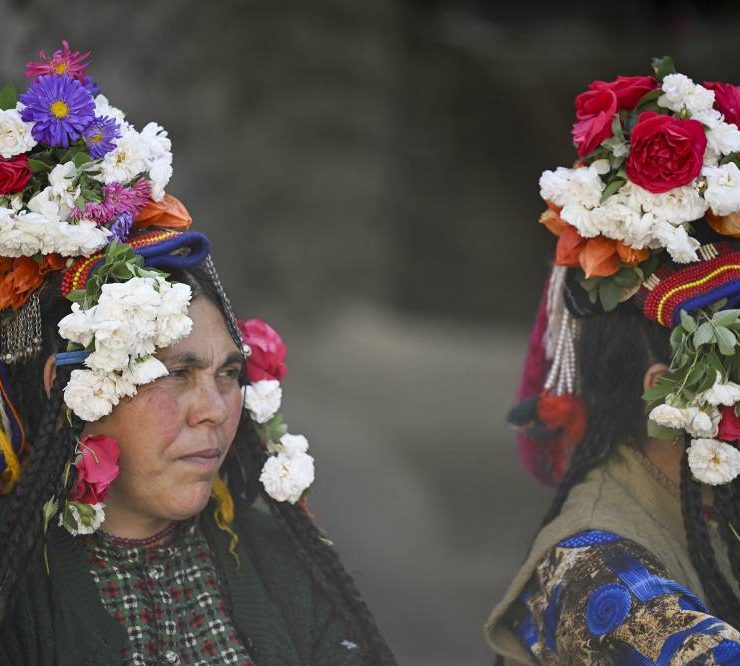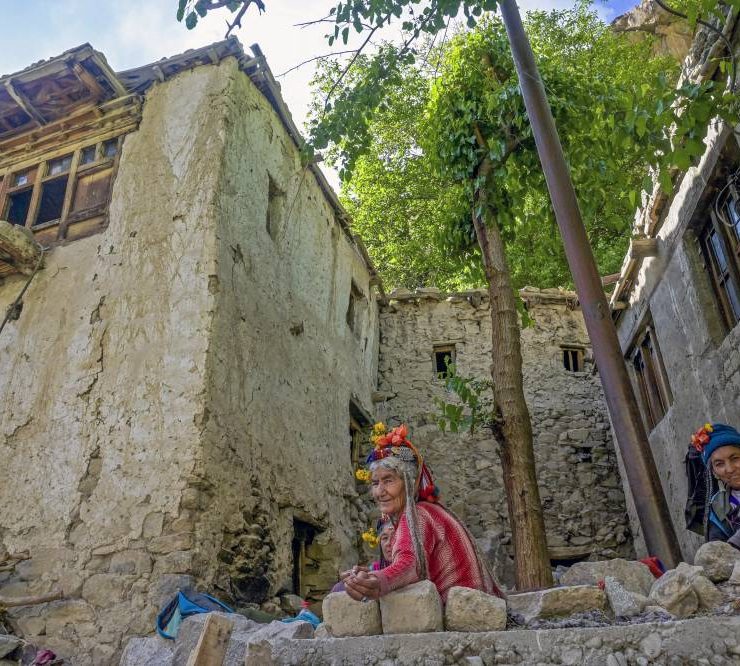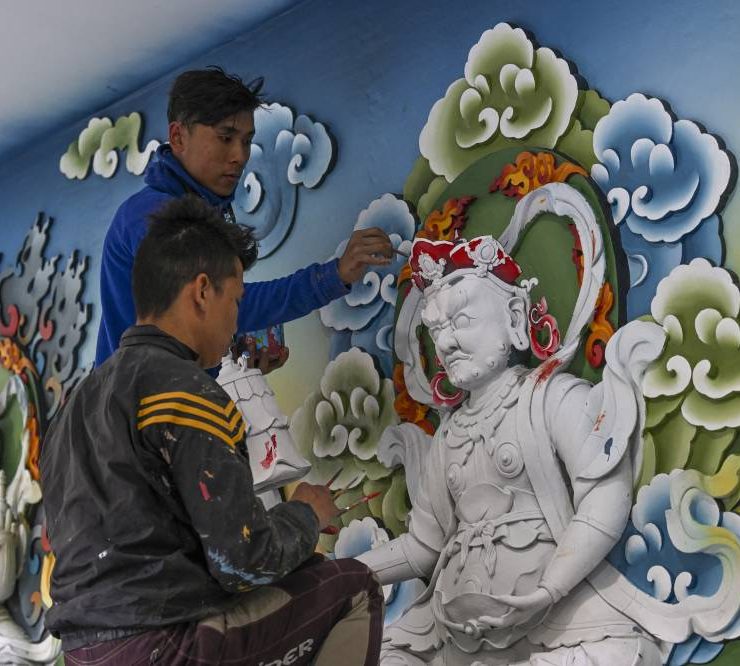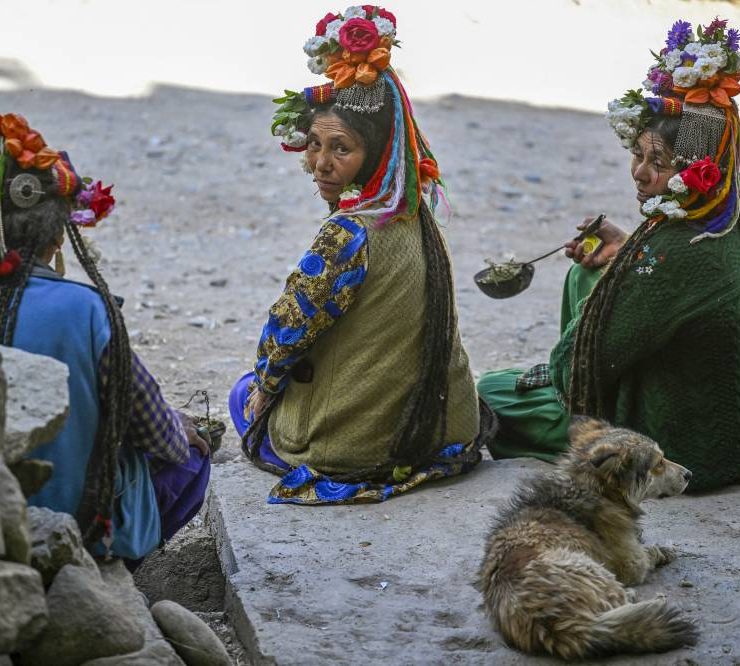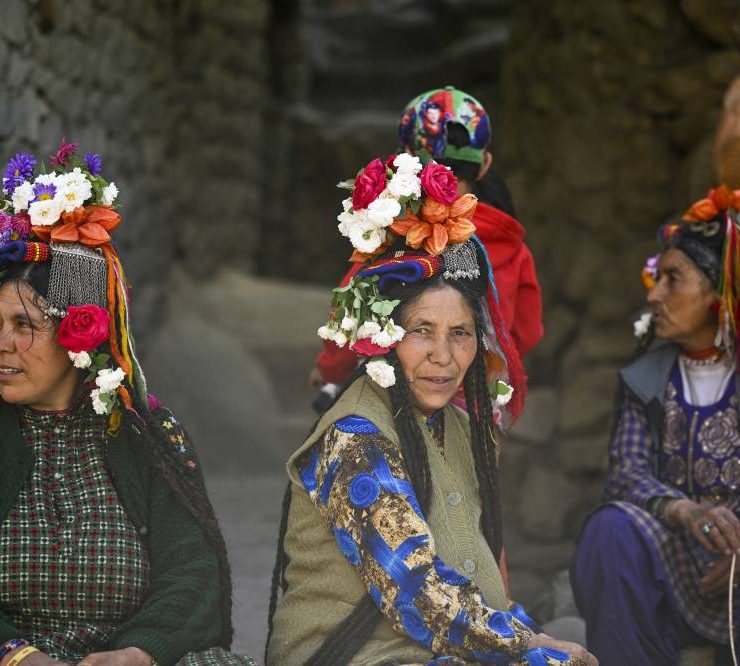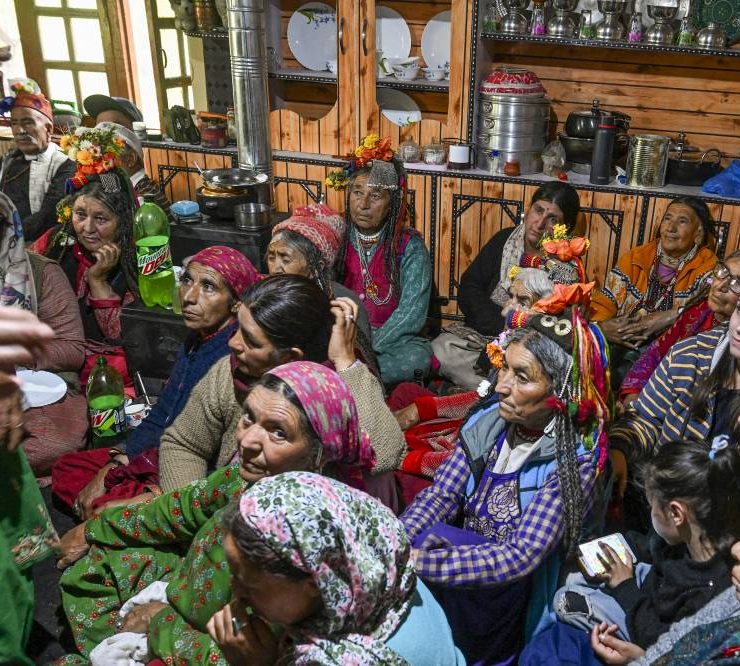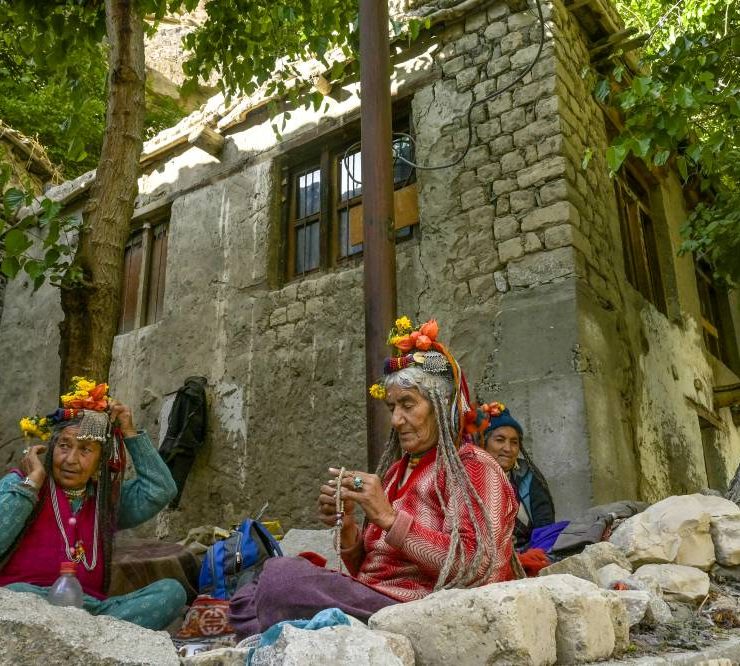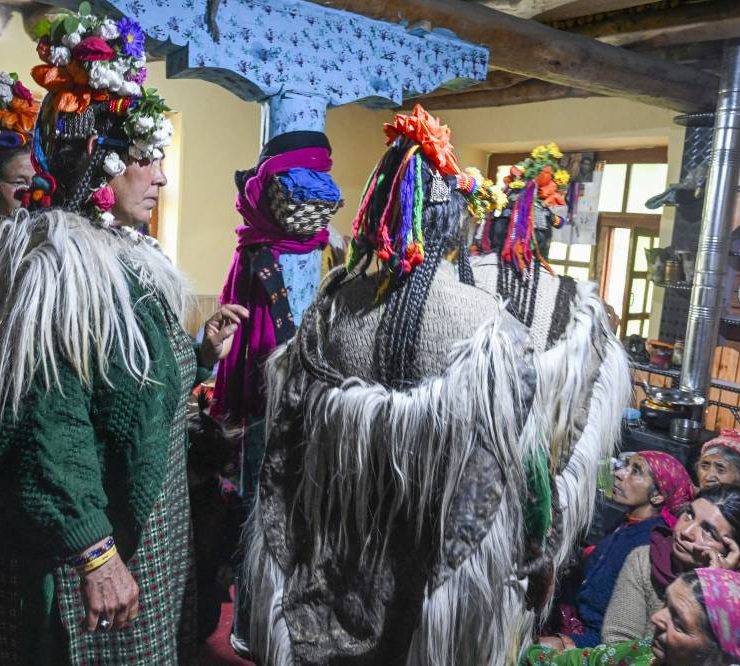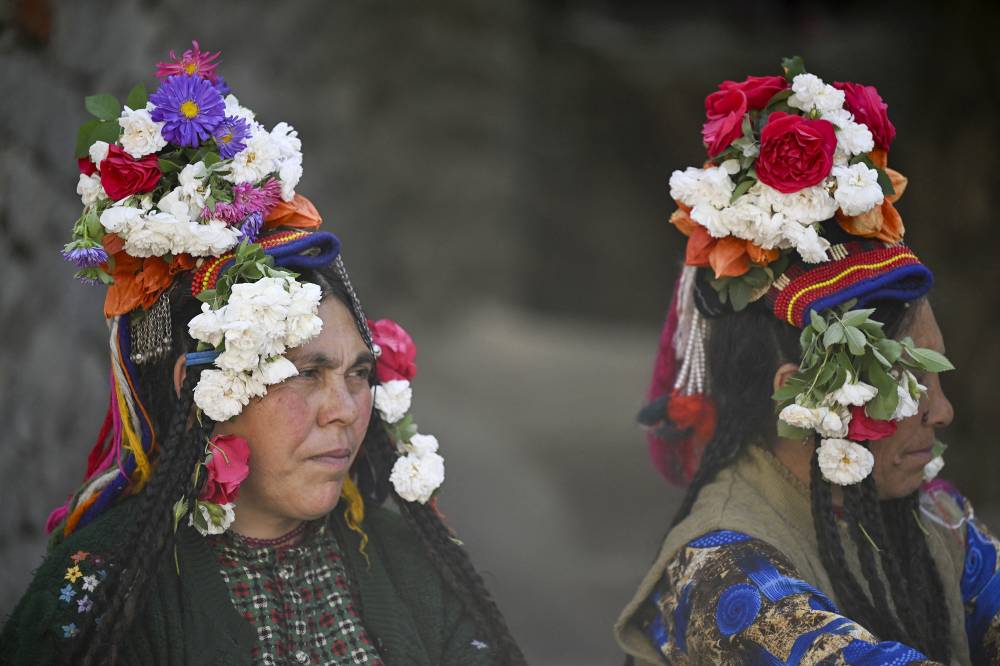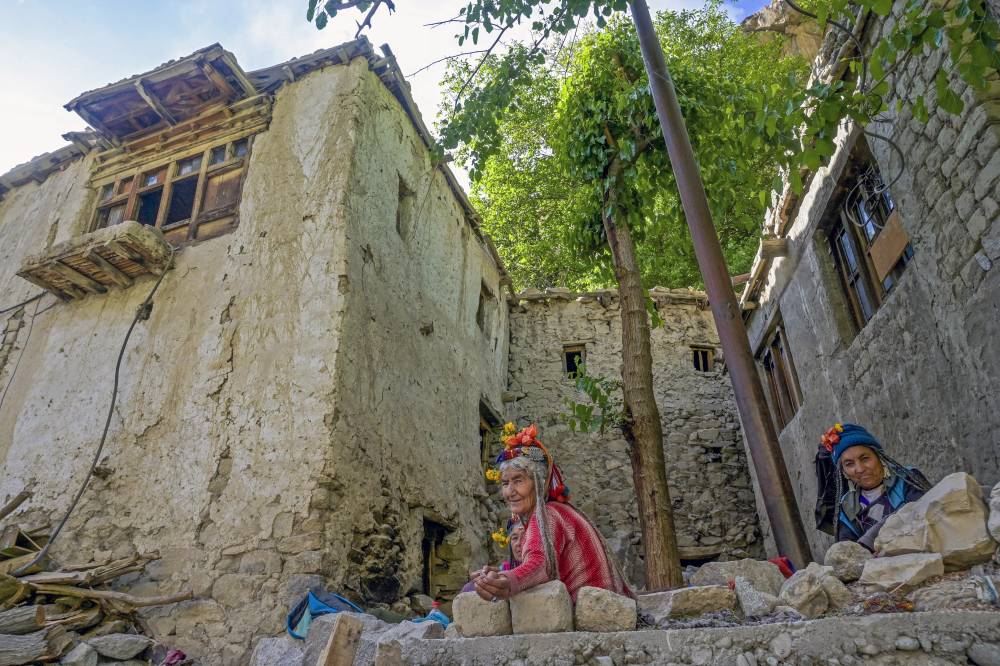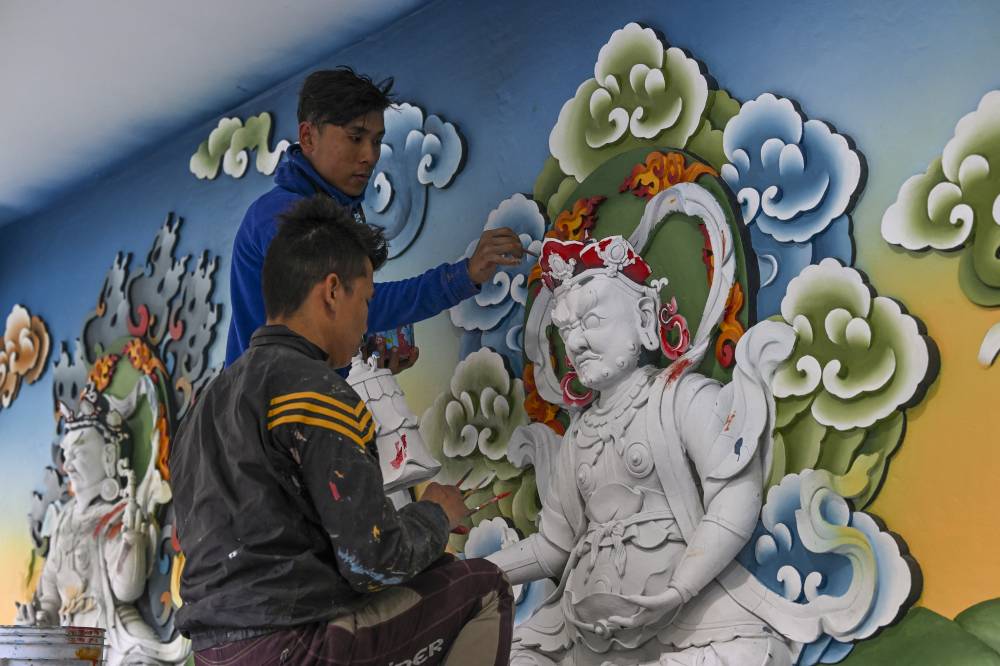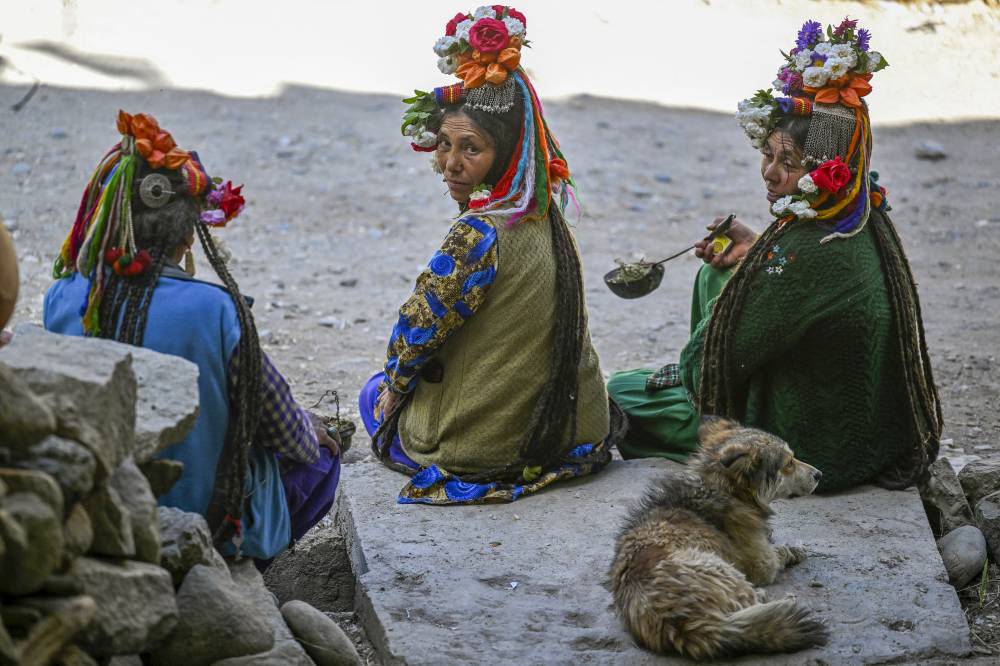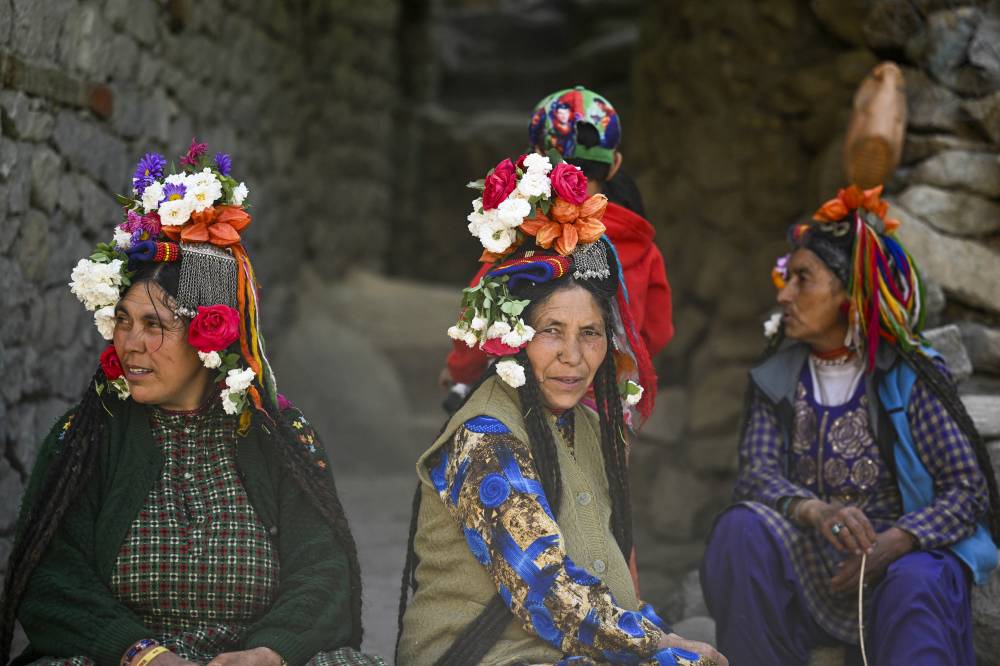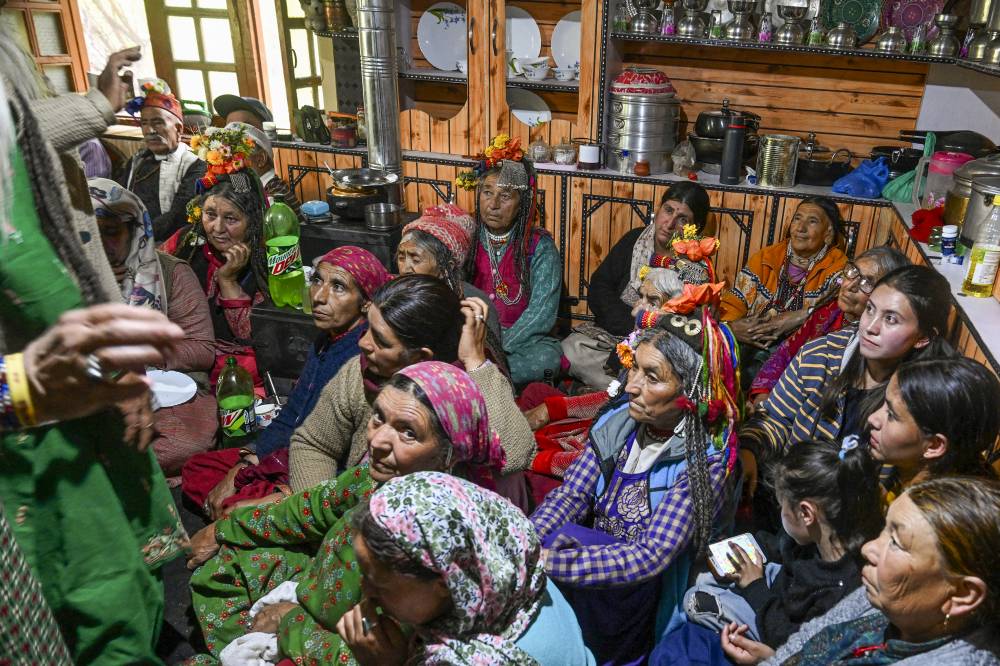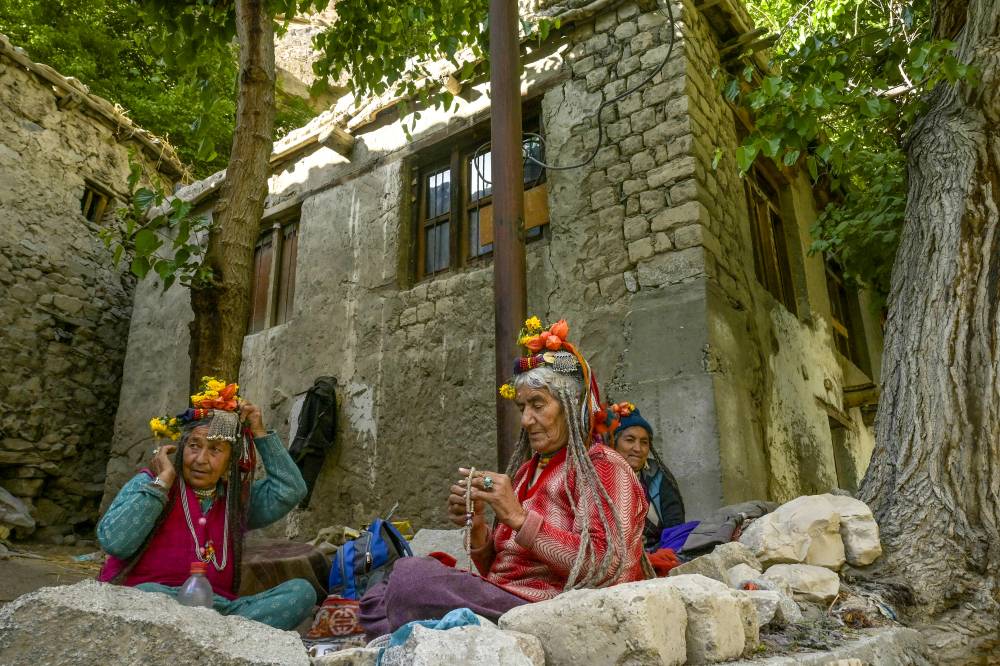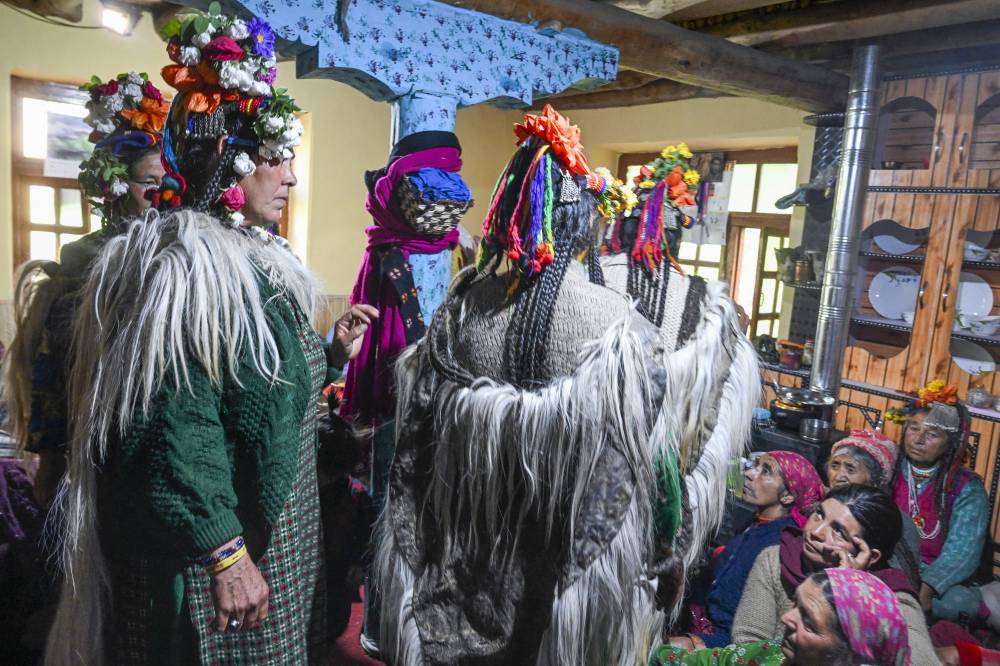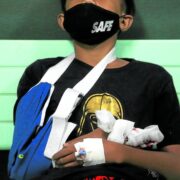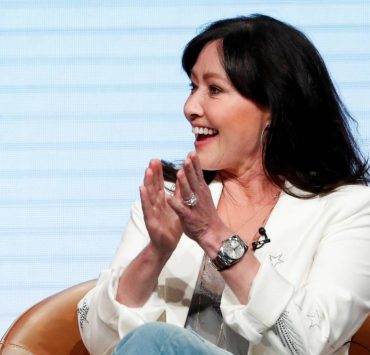Divided land, disputed origins: India’s Brokpa people
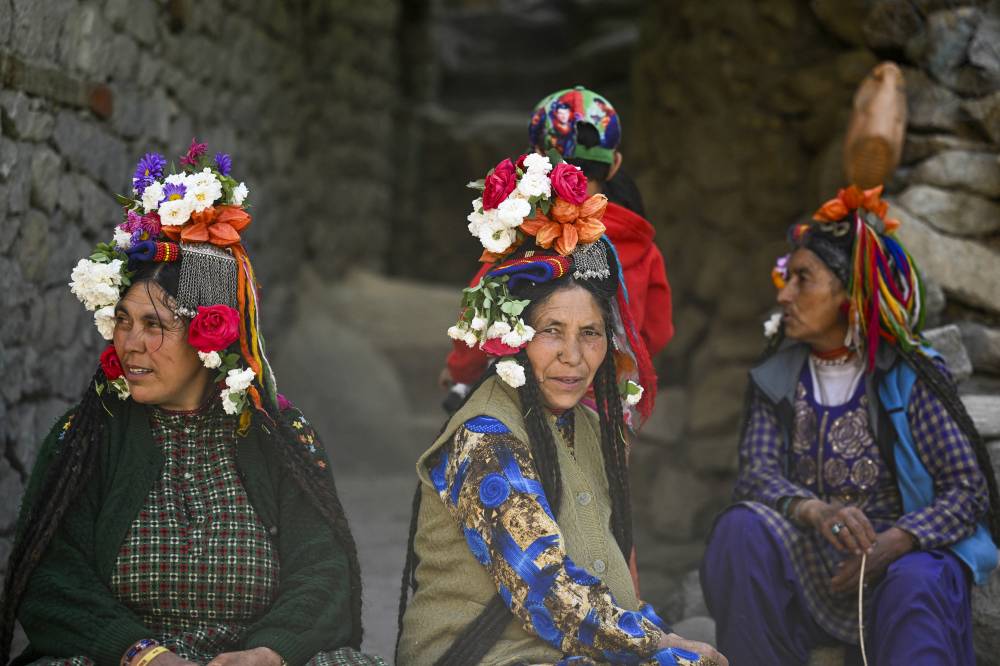
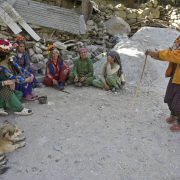
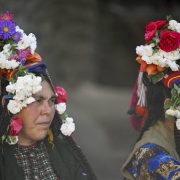
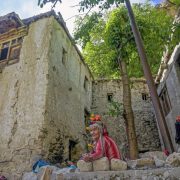
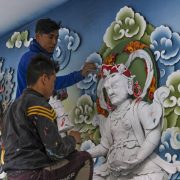 +5
+5 Divided land, disputed origins: India’s Brokpa people
(FILES) Brokpa ethnic community's women sit near their houses in Garkon village in Ladakh on May 22, 2024. High in the icy Indian Himalayas, a long-isolated people recall origin myths of millennia-old migrations from afar -- an identity in disputed lands twisted today by politics. The Brokpa people of Ladakh have no written language, practise a culture of polygamy, and have their own calendar. (Photo by TAUSEEF MUSTAFA / AFP)
Divided land, disputed origins: India’s Brokpa people
(FILES) Brokpa ethnic community's women sit near their houses in Garkon village in Ladakh on May 22, 2024. High in the icy Indian Himalayas, a long-isolated people recall origin myths of millennia-old migrations from afar -- an identity in disputed lands twisted today by politics. The Brokpa people of Ladakh have no written language, practise a culture of polygamy, and have their own calendar. (Photo by TAUSEEF MUSTAFA / AFP)
Divided land, disputed origins: India’s Brokpa people
In this photograph taken on May 21, 2024, Brokpa ethnic community's women sit near their houses in Garkon village in Ladakh. High in the icy Indian Himalayas, a long-isolated people recall origin myths of millennia-old migrations from afar -- an identity in disputed lands twisted today by politics. The Brokpa people of Ladakh have no written language, practise a culture of polygamy, and have their own calendar. (Photo by TAUSEEF MUSTAFA / AFP)
Divided land, disputed origins: India’s Brokpa people
In this photograph taken on May 21, 2024, artists paint a religious mural at a monastery in Garkon village, Ladakh. High in the icy Indian Himalayas, a long-isolated people recall origin myths of millennia-old migrations from afar -- an identity in disputed lands twisted today by politics. The Brokpa people of Ladakh have no written language, practise a culture of polygamy, and have their own calendar. (Photo by TAUSEEF MUSTAFA / AFP)
Divided land, disputed origins: India’s Brokpa people
In this photograph taken on May 22, 2024, Brokpa ethnic community's women sit near their houses in Garkon village in Ladakh. High in the icy Indian Himalayas, a long-isolated people recall origin myths of millennia-old migrations from afar -- an identity in disputed lands twisted today by politics. The Brokpa people of Ladakh have no written language, practise a culture of polygamy, and have their own calendar. (Photo by TAUSEEF MUSTAFA / AFP)
Divided land, disputed origins: India’s Brokpa people
In this photograph taken on May 22, 2024, Brokpa ethnic community's women sit near their houses in Garkon village in Ladakh. High in the icy Indian Himalayas, a long-isolated people recall origin myths of millennia-old migrations from afar -- an identity in disputed lands twisted today by politics. The Brokpa people of Ladakh have no written language, practise a culture of polygamy, and have their own calendar. (Photo by TAUSEEF MUSTAFA / AFP)
Divided land, disputed origins: India’s Brokpa people
In this photograph taken on May 22, 2024, Brokpa ethnic community's women gather at a house in Garkon village in Ladakh. High in the icy Indian Himalayas, a long-isolated people recall origin myths of millennia-old migrations from afar -- an identity in disputed lands twisted today by politics. The Brokpa people of Ladakh have no written language, practise a culture of polygamy, and have their own calendar. (Photo by TAUSEEF MUSTAFA / AFP)
Divided land, disputed origins: India’s Brokpa people
In this photograph taken on May 21, 2024, Brokpa ethnic community's women sit near their houses in Garkon village in Ladakh. High in the icy Indian Himalayas, a long-isolated people recall origin myths of millennia-old migrations from afar -- an identity in disputed lands twisted today by politics. The Brokpa people of Ladakh have no written language, practise a culture of polygamy, and have their own calendar. (Photo by TAUSEEF MUSTAFA / AFP)
Divided land, disputed origins: India’s Brokpa people
In this photograph taken on May 22, 2024, Brokpa ethnic people gather at a house in Garkon village in Ladakh. High in the icy Indian Himalayas, a long-isolated people recall origin myths of millennia-old migrations from afar -- an identity in disputed lands twisted today by politics. The Brokpa people of Ladakh have no written language, practise a culture of polygamy, and have their own calendar. (Photo by TAUSEEF MUSTAFA / AFP)
GARKON, INDIA—High in the icy Indian Himalayas, a long-isolated people recall origin myths of millennia-old migrations from afar—an identity in disputed lands twisted today by politics.
The Brokpa people of Ladakh have no written language, practice a culture of polygamy and have their own calendar.
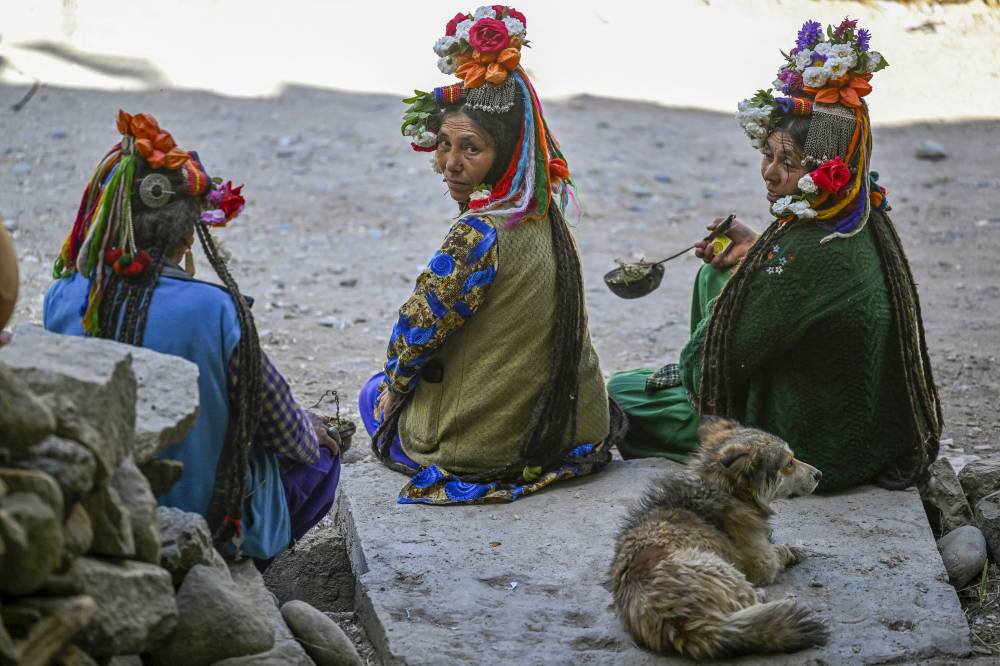
The most cherished ballad of the Brokpa, some 6,000 of whom live in a rugged mountain valley of the Indus river, is the “song of history.”
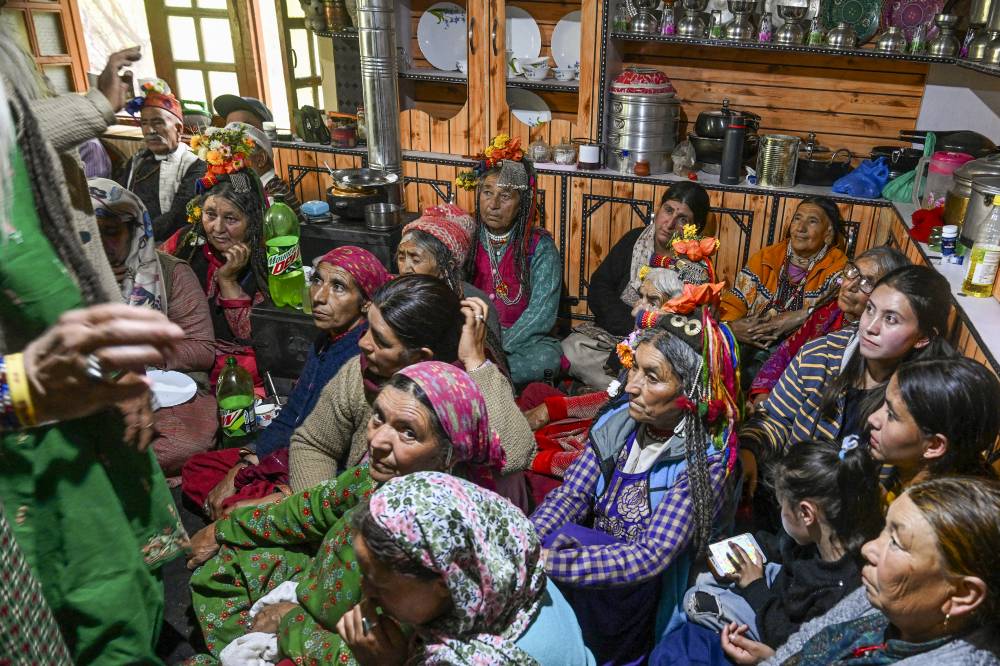
A new verse is added every 12 years, a cycle which counts as just one “year” in their calendar.
Tsering Gangphel, 85, said it details Brokpa legends that they came from ancient Rome.
Other Brokpa people recount myths of ancestral links to Alexander the Great’s army, who invaded in the fourth century BC.
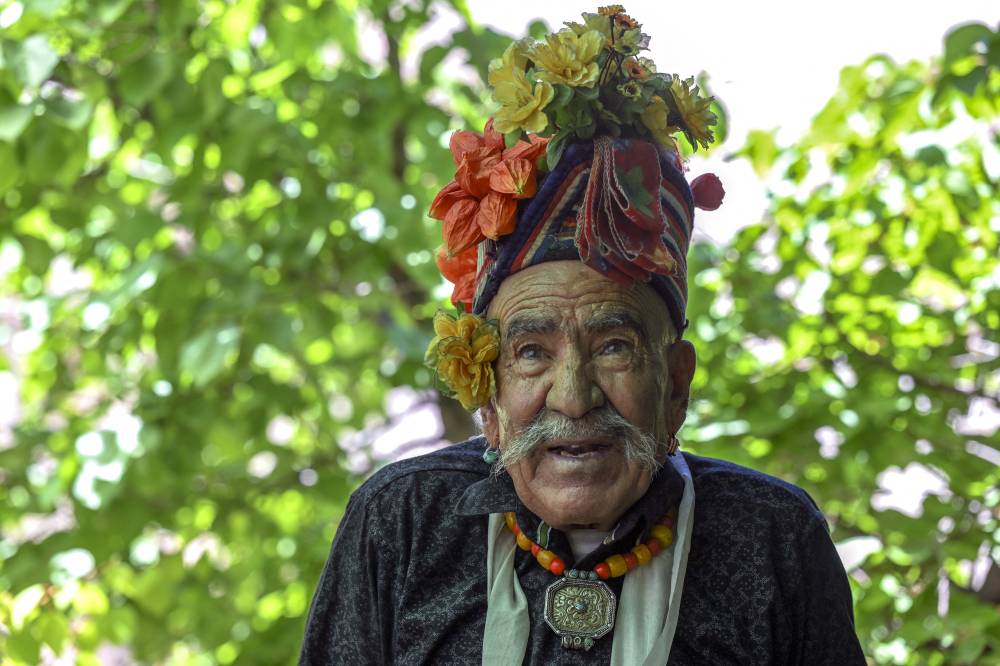
Scientists are skeptical, with one study of Brokpa DNA suggesting their roots lay in southern India.
But Gangphel—who said he can sing a thousand songs in the Brokpa language detailing their culture—is adamant about his people’s past.
“We still celebrate our arrival here by dancing and singing in each village, once every three years,” Gangphel told Agence France-Presse (AFP), at his home overlooking the roaring river.
“We are Aryans,” he added.
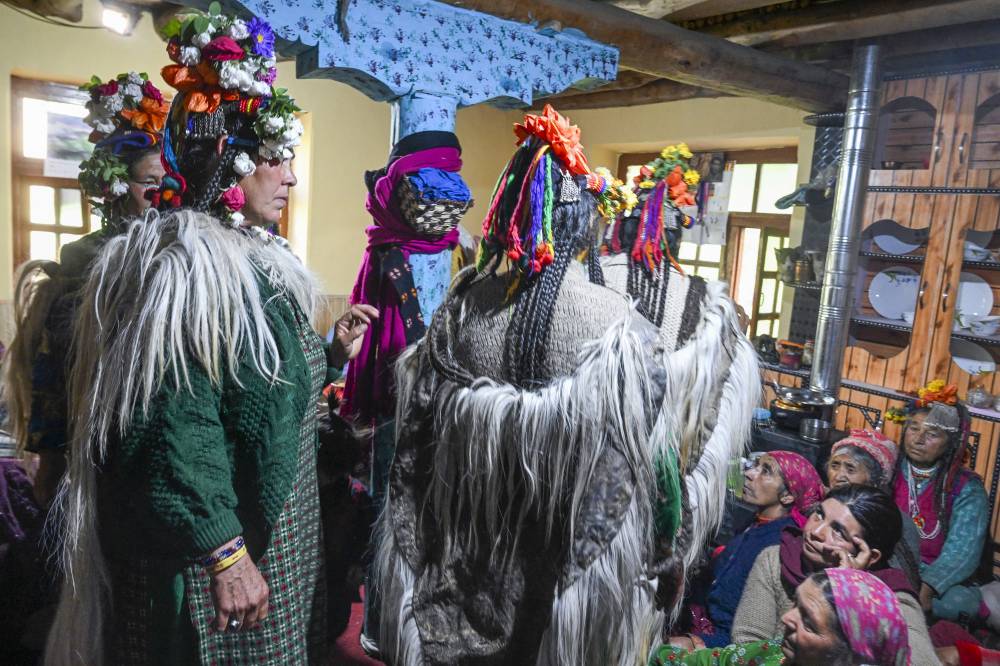
The deeply contested term refers to opaque prehistory—which critics say is today more about gritty realpolitik than foundation fables.
‘Validate their hold’
In South Asia’s ancient Sanskrit language, “aryan” means “noble” or “distinguished,” not a separate ethnicity.
It was once a loose term suggesting that people from Europe to Asia had linked ancestors in Central Asia, reflected in common linguistic roots.
That is a far cry from the genocidal Nazi fantasies of a blond-haired and blue-eyed master race.
Some right-wing Hindus use the term to claim “Aryan” ancestors originated in India, linking it to a Hindu and national identity.
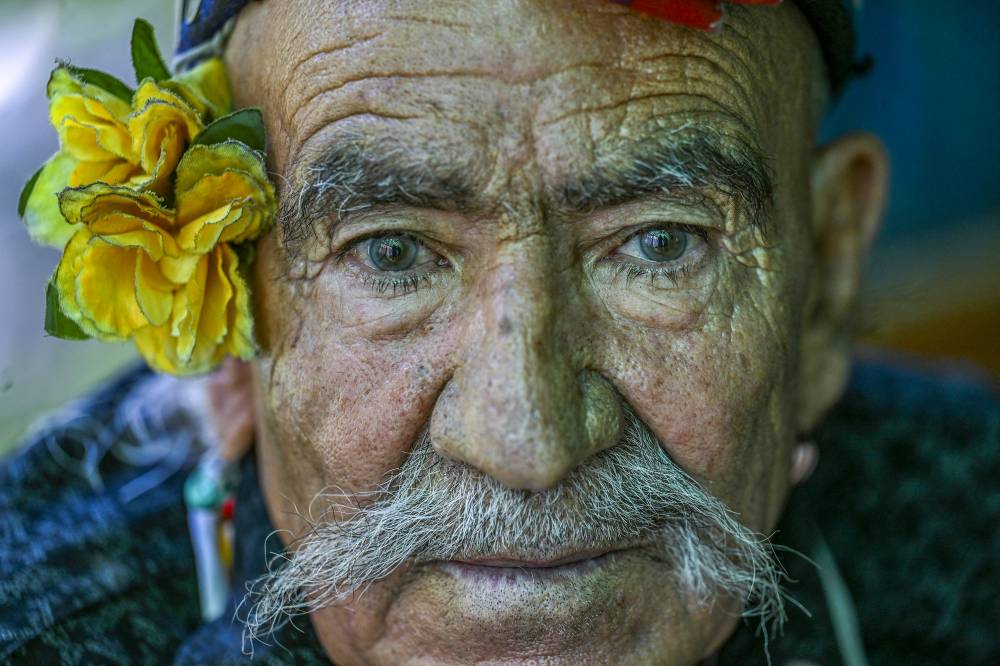
For the Brokpa, the term “Aryan” has been used as a tool to promote both tourism and India’s geopolitical ambitions.
Ladakh, part of Kashmir, is divided between India and Pakistan by a highly militarized frontier.
Each country claims the region as their own.
In 1999, Brokpa yak herder Tashi Namgyal sighted “Pakistani intruders” in Indian-controlled territory and told Indian troops.

That triggered a 10-week conflict between the nuclear-armed rivals which cost 1,000 lives on both sides.
“I saved the nation’s honor,” 60-year-old Namgyal told AFP, proudly showing army letters praising his service.
After the fighting stopped, Indian authorities pushed tourism in Brokpa areas calling their lands the “Aryan Valley.”
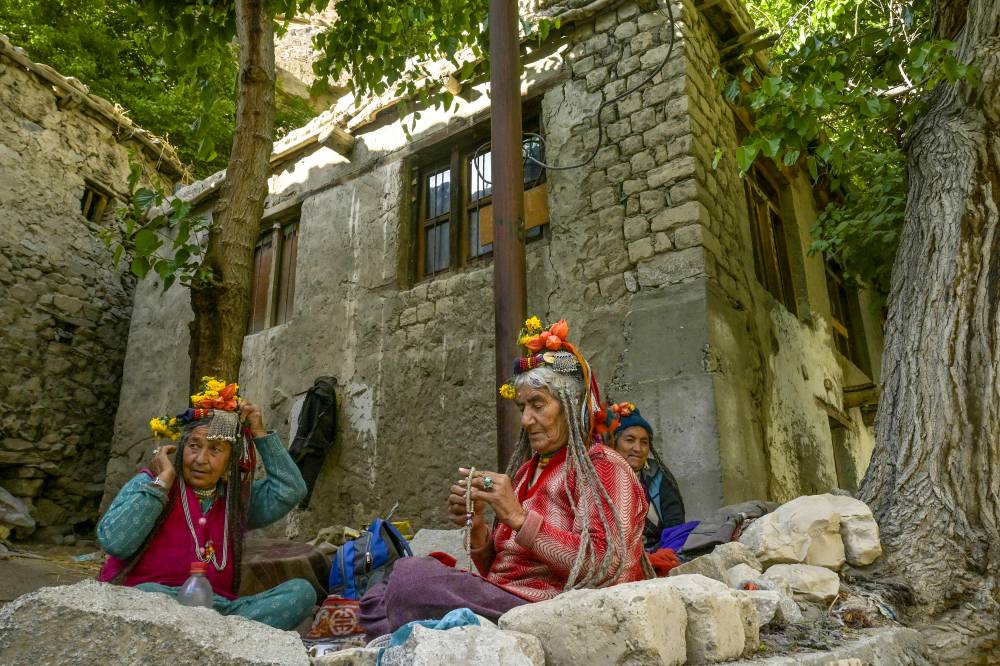
The tourism ministry promotes them as the “Last Aryan Villages of India.”
Amalgamated
Mona Bhan, a Brokpa expert at Syracuse University in New York, says the community uses “Aryan” to highlight its sociocultural practices and history.
But Indian Hindu nationalists have used the term to “validate their hold on India’s disputed territory,” according to the anthropologist.
The Brokpa calendar means a child’s first birthday is marked when they turn 12.
Using that calculation, a laughing and grey-haired Gangphel remarked that he is “just 7 years old.”
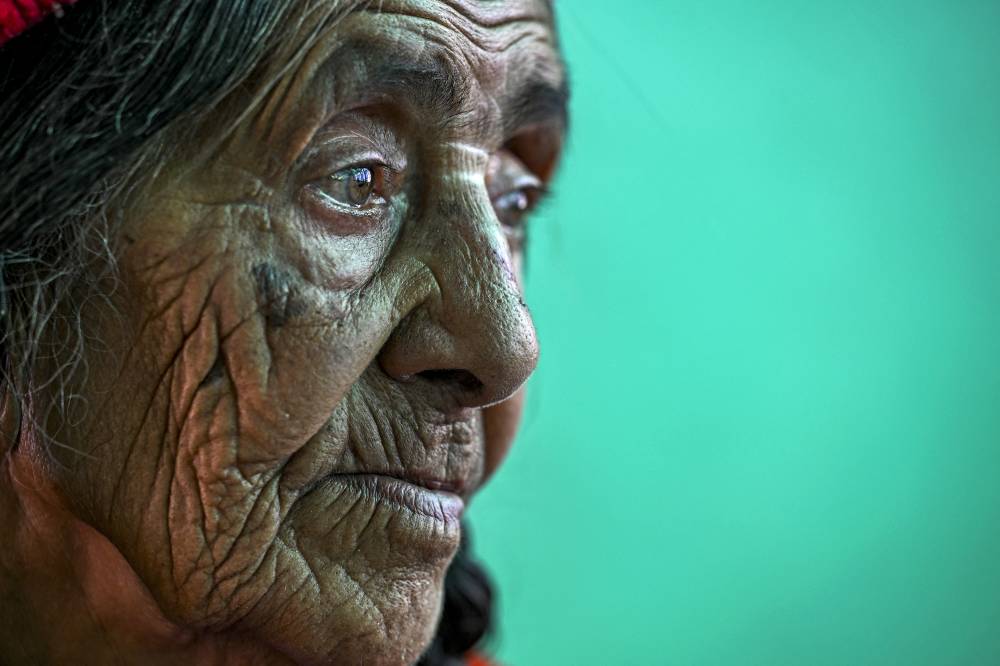
Gangphel, a father of six who has two wives, said marrying outsiders was frowned upon.
“Being Brokpa means being unique in language, dress and dance,” said 14-year-old schoolgirl Etzes Dolma.
But an influx of tourists and government development policies are bringing increasing modernity.
Earth and wood homes are being replaced with concrete and glass construction.
The Brokpa worship their traditional gods, but those now are often amalgamated into other beliefs.
AFP is one of the world's three major news agencies, and the only European one. Its mission is to provide rapid, comprehensive, impartial and verified coverage of the news and issues that shape our daily lives.



